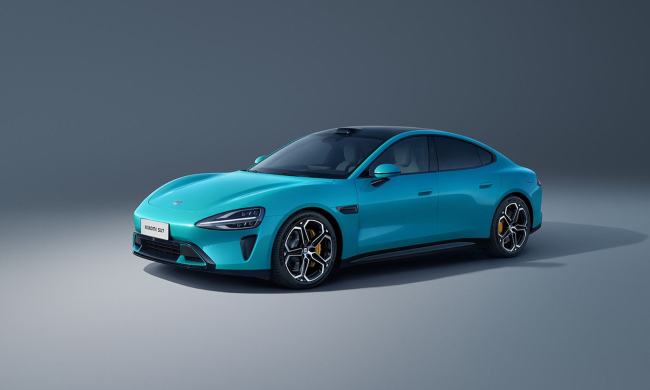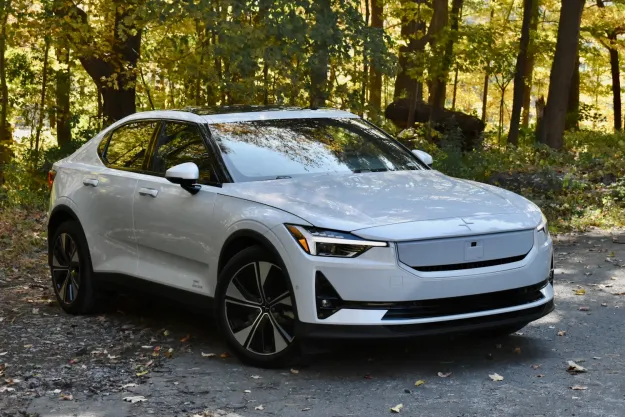
“The updated Polestar 2 is a nice EV, but not nice enough to justify its premium price.”
- Distinctive design
- Well-tuned chassis
- Now gets up to 320 miles of range
- Cramped-feeling interior
- Poor value
Polestar, the all-electric spinoff brand of Volvo, is in a holding pattern. When it launched for the 2021 model year, the Polestar 2 combined the engineering acumen of Volvo with added sportiness and exclusivity, making for an attractive package. Polestar has since promised additional EVs further separated from those of its parent brand, but in the meantime the 2 has continued as its sole product while the market has gotten more crowded. But that doesn’t mean it’s not evolving.
The 2024 Polestar 2 represents a major overhaul, including powertrain changes aimed at boosting both efficiency and driving fun, a larger battery pack for some models that affords just over 300 miles of range, and some styling and equipment tweaks.
However, since the Polestar 2 launched, Volvo has added two EVs of its own — the XC40 Recharge and C40 Recharge — using the same basic ingredients. The Hyundai Ioniq 6 has also reached showrooms, giving buyers another stylish non-SUV model to consider, and at the time of publication, the Tesla Model 3 was much cheaper than the Polestar, which starts at $51,300. Our Long Range Single Motor Plus test car used for this review — which isn’t even the most expensive model — had a listed price of $56,750.
Design and interior
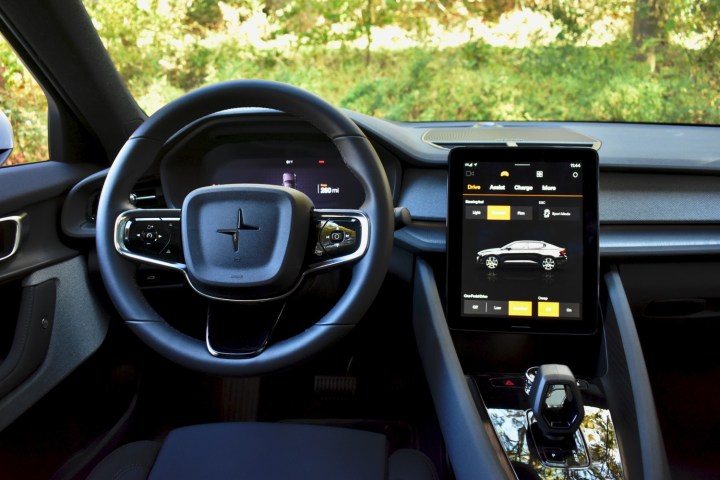
The Polestar 2 gets some small styling changes for 2024. The most notable is a blanked-off grille that further emphasizes that this is an EV, while also showing off the embedded radar that is part of the car’s driver-assist sensor suite. Polestar retained what was arguably the best part of the design, the squared-off rear end with its distinctive rectangular lighting element.
This is still a car that is unique-looking, but also looks like it came from another brand. That’s because the design originated under Volvo, and still retains some of that brand’s styling elements like its signature headlights. At the same time, the Polestar 2 stands out as an EV that isn’t an SUV, with creased surfaces that contrast with the pebble-shaped Hyundai Ioniq 6 and Tesla Model 3. A raised ride height and prominent fender flares also add a hint of ruggedness, not unlike Volvo’s Cross Country models.
Underneath this unusual collection of styling elements is Volvo’s Compact Modular Architecture (CMA), a vehicle platform designed for both EVs and internal-combustion models. It’s shared with the Volvo C40 Recharge and XC40 Recharge (the latter is also available with a gasoline engine), but those both have SUV bodies.
A high seating position and low roof doesn’t make for the most spacious feeling.
Polestar doesn’t publish full interior measurements, but it’s worth noting that the 2’s combination of a high seating position and low roof doesn’t make for the most spacious feeling. Neither does the raised center console, which moves some controls closer to the driver, but also makes front seat occupants feels a bit hemmed in.
The interior does at least have an upscale appearance, thanks to excellent fit and finish and some Volvo-derived touches like a portrait-oriented touchscreen and beveled dashboard edges. Cloth seats are the default because they’re vegan, Polestar notes, and they are nice and comfortable. Nappa leather upholstery is available as an option, but the overall material choices won’t make you feel good about the Polestar’s purchase price.
While its closest rivals are sedans with trunks, the Polestar 2 is a hatchback with fairly good cargo space for its size — 14.4 cubic feet with the rear seats in place and 38.7 cubic feet with the rear seats folded. The 2 has a frunk as well, but at just 1.2 cubic feet, it’s pretty much only useful as a storage space for the charging cable.
Tech, infotainment, and driver assist

One area that doesn’t see change is the infotainment system. The Polestar 2 comes standard with an 11.-2inch touchscreen and 12.3-inch digital instrument cluster, along with the Android-based operating system that debuted in this car, but has since spread to various Volvo models. Apple CarPlay is included, but the system has native Google apps such as Google Maps, so it feels like you’re using Android Auto even when a phone isn’t connected.
Apple or Android preferences aside, this is a fundamentally good infotainment system. The graphic design is quite literally on brand, incorporating Polestar’s typeface and orange color scheme for a distinctive look. Images, such as the rendering of the car that pops up when switch between drive modes, look sharp without being gimmicky. And the expansive map view for the instrument cluster is one of the better executions we’ve seen.
Polestar offers a a fundamentally good infotainment system.
The setup looks cool, but it’s one of many examples in the auto industry of a touchscreen-centric setup being more about form than function. Options for drive modes, regenerative braking, and steering weight are placed off the home screen, which is not ideal for use while driving. Climate controls are easier to access, but still more awkward to use than physical buttons. And the one physical control included — a volume knob — is too sensitive.
Polestar shares driver-assist tech with parent brand Volvo. That means the Polestar 2 is available with the Pilot Assist driver-assist system, which essentially combines adaptive cruise control and steering assist for lane centering during highway driving. But it’s only standard on dual-motor models. Blind spot monitoring, cross traffic alert, park assist, and a 360-degree camera system are now standard across the board for 2024, however.
Driving experience
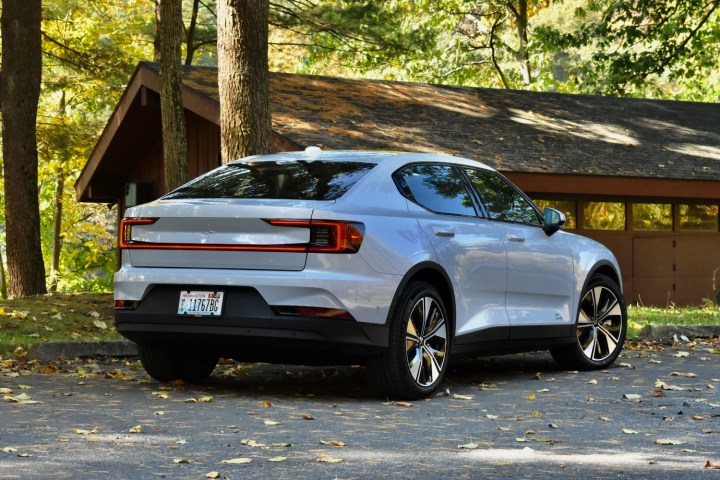
Polestar made some notable mechanical changes for 2024. The base single-motor powertrain now comes with a larger 82-kilowatt-hour battery pack and switches from the previous front-wheel drive to rear-wheel drive. Output also rises to 299 horsepower and 361 pound-feet of torque from the previous 231 hp and 243 lb-ft. The manufacturer-estimated zero-to 60-mph time also drops from 7.0 seconds to 5.9 seconds, and the top speed has been raised from 100 mph to 127 mph.
Dual-motor all-wheel drive models have the same 78-kWh pack as before, but output increases to 421 hp and 546 lb-ft of torque — up 13 hp and 59 lb-ft from before. Polestar continues to offer the Performance Pack for dual-motor models, adding upgraded brakes and manually adjustable dampers. This option also boosts output to 455 hp, but that’s less than was offered for 2023. Torque is up from the 2023 Performance Pack model, but the same as the non-Performance Pack 2024 model. Acceleration times drop by 0.1 second to 4.3 seconds for the standard dual-motor powertrain and 4.1 seconds for the Performance Pack version, while the top seed remains unchanged at 127 mph.
The Polestar 2 offers a good balance between ride quality and handling.
These revised numbers mean the rear-wheel drive Polestar 2 is still 0.1 second slower to 60 mph than a rear-wheel drive Tesla Model 3. The standard all-wheel drive version is 0.1 second slower than an all-wheel drive Tesla Model 3 Long Range, and the Performance Pack still leaves the Polestar 2 behind the Model 3 Performance by an even second. It’s doubtful that most drivers will notice these differences in the real world, however.
What drivers will notice is the excellent chassis tuning. The Polestar 2 isn’t as sharp as the best internal-combustion sports sedans, but it offers a good balance between ride quality and handling. It’s comfortable on a highway drive out to the country and, even with our single-motor test car’s base suspension setup, it’s entertaining on the back roads when you get there. The switch to rear-wheel drive is apparent, giving the 2 a more nimble feel. Polestar also offers selectable regenerative braking, ranging from zero regen to true one-pedal driving. With one-pedal mode engaged, we were able to cover long stretches of road without touching the brake pedal.
Range, charging, and safety
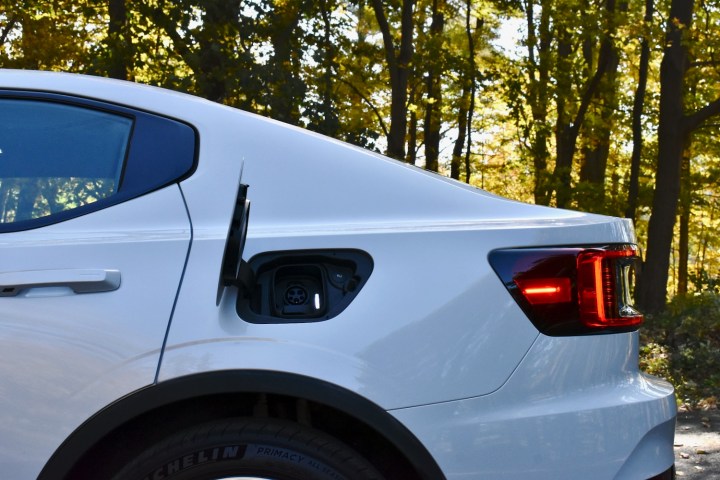
Thanks to its larger battery pack, the single-motor Polestar 2 now boasts a maximum 320 miles of range, up from the previous 270-mile maximum. That’s with the base 19-inch wheels, however; opting for 20-inch wheels drops range to 307 miles. Dual-motor models, which have the same-size battery pack as before, top out at 276 miles (compared to 260 miles for 2023 models) with 19-inch wheels.
Single-motor models can DC fast-charge at 205 kW, which can take the battery from 10% to 80% charge in an estimated 28 minutes. Dual-motor models have a lower peak power rate of 155 kW, which stretches the estimated time for a 10% to 80% charge to 34 minutes. All models have an 11-kW AC charger for home charging, which can recharge the battery pack in eight hours using a 240-volt Level 2 source.
Polestar’s warranty coverage, including a four-year, 50,000-mile warranty for the car and an eight-year, 100,000-mile warranty for the battery pac,k is comparable to other EVs. The battery warranty also applies if the pack drops below 70% of its original usable capacity before eight years or 100,000 miles.
Parent brand Volvo’s emphasis on safety seems to have carried over to Polestar. The National Highway Traffic Safety Administration (NHTSA) gave the 2024 Polestar 2 a five-star overall safety rating, as well as five stars in each crash-test category. However, the Insurance Institute for Highway Safety (IIHS) hadn’t run the Polestar 2 through its more thorough regimen of tests at the time of publication.
How DT would configure this car
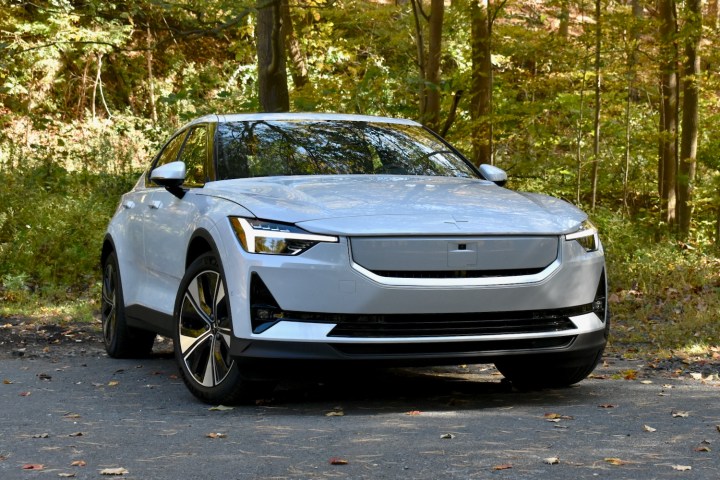
Past experience has shown that the optional Performance Pack for dual-motor all-wheel drive models makes a big difference in handling. That, along with the dual-motor powertrain’s added thrust, makes it the choice for driving enthusiasts. For everyone else, though, the Long Range Single Motor is the best choice.
The Long Range Single Motor is the only Polestar 2 configuration that tops 300 miles of range. It can also charge more quickly than the Long Range Dual Motor, all while costing less. Even adding the $2,000 Pilot Pack to gain all available driver-assist tech doesn’t close the price gap between the two powertrains.
There’s a lot to like about the Polestar 2, including its stylish design, sporty handling, and its 320-mile range. It’s also distinctive. Polestar cares more about exclusivity than volume, so you’re less likely to see another 2 on the road. The Polestar also looks good in comparison to the related Volvo XC40 Recharge and C40 Recharge, and offers slightly more range for about the same price. The two Volvo models have more interior space, however.
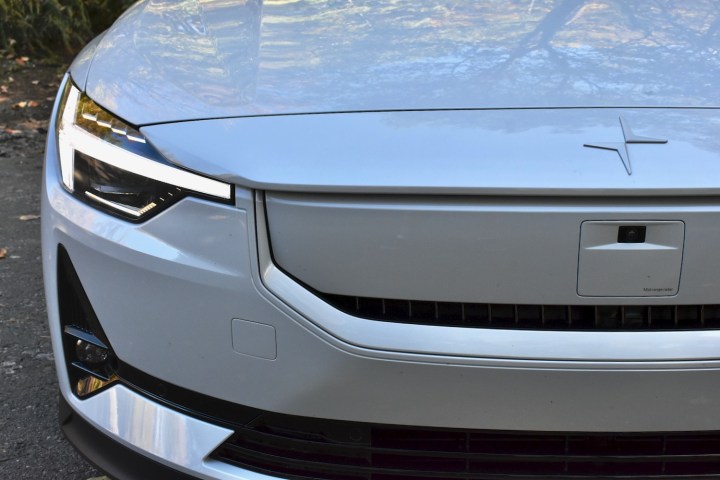
However, that upscale positioning also means the Polestar 2 no longer makes much sense in the context of the larger EV market. The Tesla Model 3 only offers 272 miles of range in base form, but it’s also about $10,000 cheaper than the Polestar at the moment. The Hyundai Ioniq 6 is available with 361 miles of range for $46,615 in SE RWD Long Range form. With a stylish design of its own, impressive tech, and faster charging, the Hyundai is definitely a more sensible alternative to the Polestar.
In a relatively short time, the Polestar 2 has gone from a badly needed addition to an EV market starved for choice to a quirky sideshow. It’s a mainstream EV with premium pricing, highlighting the difference between Polestar’s aspirations and where the brand actually is today.
